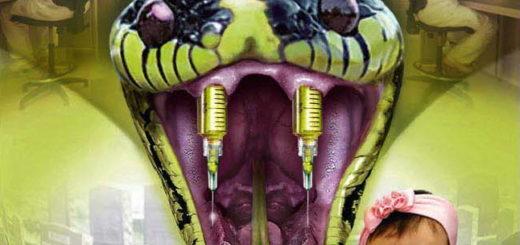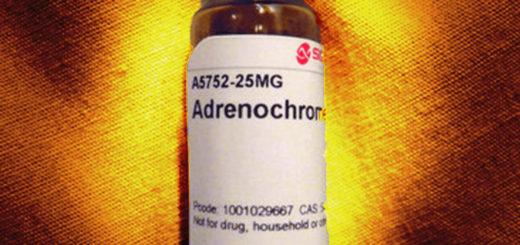Do Vampires Know Something We Don’t?
By Brian Handwerk
smithsonian.com
May 19, 2015 11:00AM
Why do vampires from Dracula to Angel seem to crave the blood of the young and beautiful? The undead may be onto something. Young blood, it seems, has special healing properties that have been lost in older blood.
A recent finding by scientists from the Hospital for Sick Children, Toronto, and Duke University challenges long-held ideas about why our bones have a harder time healing as we age. Their research discovered that old mouse bones mend like youthful bones do when they’re exposed to young blood after a fracture.
“The traditional concept is that as you get older, your bone cells kind of wear out so they can’t heal as well, and we thought we’d find that during this study as well,” explains study co-author Benjamin Alman, of the Hospital for Sick Children. “But it turns out that it’s not the bone cells, it’s the blood cells. As you get older, the blood cells change the way they behave when you have an injury, and as a result the cells that heal bone aren’t able to work as efficiently.”
When a bone is fractured, significant bleeding occurs at the site. Inflammatory blood cells help spur the process by which new bone cells heal the break over time. Alman and colleagues found that the blood cells of older mice don’t drive this healing the way younger blood cells do, but they also wanted to see how those older bones would heal when exposed to young blood.
The researchers paired lab mice, one old and one young, and subjected them to bone fractures, but that wasn’t all they had in common. The living animals’ circulatory systems were also joined together by a 150-year-old surgical technique known as parabiosis. Scientists removed a layer of skin from each mouse and stitched the exposed surfaces together. As the animals healed their capillaries joined, enabling their two hearts to pump the same blood throughout the two bodies as a single system. Parabiosis, which has been gaining new popularity in aging research, allowed Alman and colleagues to see what impacts the circulating factors of the younger mouse’s blood had when introduced into the body of an older mouse.
The experiment, published this week in Nature Communications, suggests that young blood cells secrete some as-yet-unknown molecule, likely a protein or possibly some other chemical, that speeds up the healing of fractured bone. The molecule apparently does so by regulating levels of beta-catenin in bone cells known as osteoblasts. Keeping beta-catenin at the proper levels appears crucial for the formation of new high-density bone.
This ability is greatly diminished in older animals’ blood because it no longer secretes the molecule, whose exact chemical nature remains a mystery at this point. “My guess is that there are a number of proteins involved that are made differently as we get older, and that they are responsible for the difficulty in healing bone,” Alman says.
The findings could prove good news for aging humans, but healing our bones won’t require the type of transfusions used in the experiment—nor will it borrow the synthesized “True Blood” variety that may soon enter clinical trials. Sharing human blood in this manner raises a number of red flags ranging from practicality to possible medical complications.
Instead, the critical next step is identifying the exact chemical nature of the molecule produced by young blood cells that older cells can no longer secrete. Pinpointing it could drive development of future drugs that would help enable older bone cells to work like they did in youth, by either spurring older blood to function more like younger blood does, or by simply delivering the proteins that the blood once did, enabling bone cells to do their healing work.
“It’s not the cells responsible for making new bone that have changed,” Alman says. “[Bone cells] still have that ability to act like they are young again.”
“If they could never behave like young cells again, and they were too worn out to produce bone the way they should, it would be really hard to change that,” he adds. “But these results show that this is a solvable problem. Now it’s a matter of figuring out how best to make it work.”
Old Blood not Old Bones Makes Fracture Healing Difficult Among the Elderly.

The Blood Countess: History’s most prolific female serial killer
More proof that truth is far more deranged than fiction.
By: Melissa Breyer
Mon, Oct 15, 2012 at 05:49 PM
Portrait of Elizabeth Báthory painted in the 16th century. (Photo: Wikimedia Commons)
For those who like to get their Halloween spooks by way of dark horror stories and tales of utterly demonic crime, let us introduce you to Countess Erzsébet (Elizabeth) Báthory de Ecsed.
Fondly remembered as “The Blood Countess,” the Hungarian noblewoman is considered the world’s most prolific, not to mention most sadistic, female serial killer. Her ties to Transylvania lore and her alleged taste for blood make her the perfect candidate for the Queen of Halloween, if not Creepiest Chick in History.
Born in 1560 to the famed noble Hungarian Báthory family, she was raised with the utmost privilege — but that also came with a long family history of savagery and derangement. From early childhood she suffered tremendous fits and extraordinary rage that historians suggest may have indicated a neurological disorder or epilepsy. And the help may not have been a very good influence either. Her childhood nurse, Ilona Joo (a later accomplice), was said to practice black magic that depended on the sacrifice of children for their bones and blood.
Married at the age of 15 to Count Ferencz Nadasdy, she was often left at home alone while her husband was away at war. According to legend, she kept company with her aunt, who was reported to have practiced witchcraft; an uncle who was an alchemist and devil-worshiper; and her brother, a reputed pedophile. With family like that …
Over the years Elizabeth gave birth to seven children and was left in charge of her husband’s properties, but she developed other passions as well — mainly of the sadistic and murderous variety. After years of rumors of her wicked ways, the Hungarian authorities finally responded and King Matthias II ordered an investigation. In 1610, investigators collected testimony from more than 300 witnesses, including priests, noblemen and commoners, along with other personnel from her castle.
Upon arrival at Báthory’s residence to arrest the countess and four servants accused of being her accomplices, the authorities reportedly found one girl dead, one dying, another wounded and many others imprisoned.
Many accounts tally the number of victims to somewhere around 650 young girls between the years of 1585 and 1610, the band of sadists was convicted of killing only 80 — mostly adolescent daughters of local peasants and lesser gentry. The girls were reportedly brutally tortured, the details of which are too heinous to recount, Halloween or not.
Three of the accomplices were sentenced to death, but the countess herself was sentenced to solitary confinement in a tower of her castle, where she died four years later in 1614.
It’s difficult to determine how horrid her crimes were, so much has become apocryphal. During the trial, two of her accomplices confessed to 36 and 37 murders during their employment. The other defendants suggested more than 50. Castle personnel estimated that somewhere between 100 and 200 bodies were removed from the premise. And one witness at the trial referred to a journal in which a total of more than 650 victims were listed by Báthory herself.
Over the years, the story of Elizabeth Báthory has evolved into accounts of the countess developing a fondness for drinking blood, earning her the nickname Countess Dracula. And there are more reports of her routine of bathing in the blood of the virgins as a component of her beauty regimen. Truth or fiction, we may never know … but it certainly adds a morbidly gory twist to the lore of one of the most seemingly depraved women known to mankind.
Elizabeth of Bathory is related to entire monarchy throughout Europe as well as the popularly known Dracula of Transylvania, a reputed blood drinker and torturer. Evidence of the royals practices of sadistic torture is well documented. The British worship of the Monarchy is not based on fact but on good PR. Movies like the Queen promote the Queen’s “compassion” when in truth, facts, show us she is nothing like she is portrayed…it is all PR.















